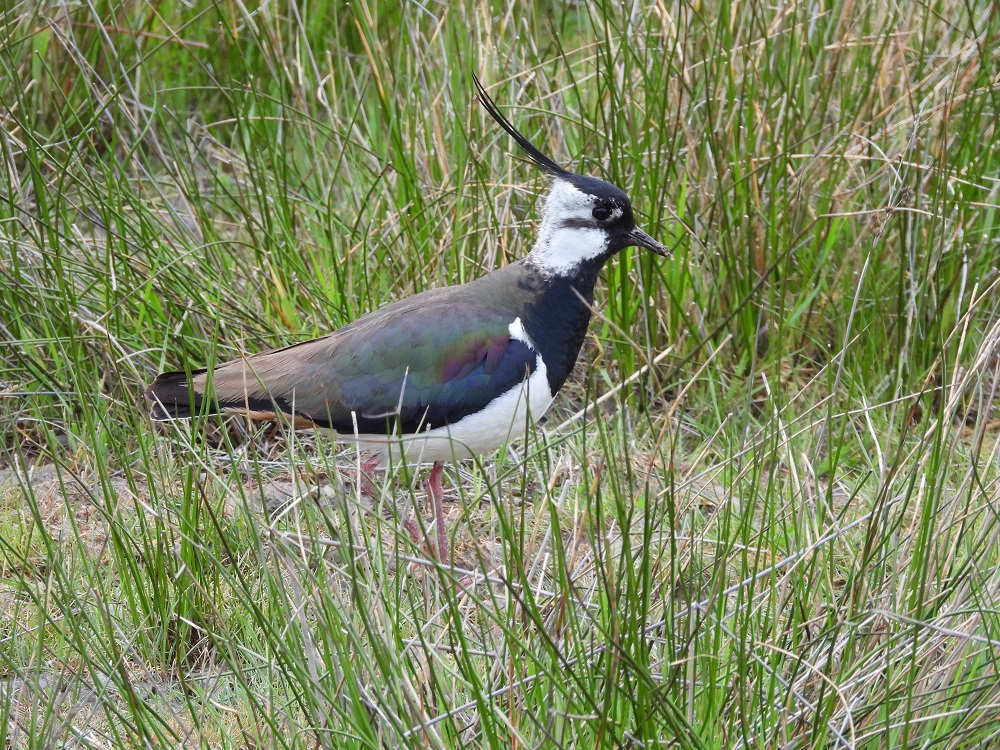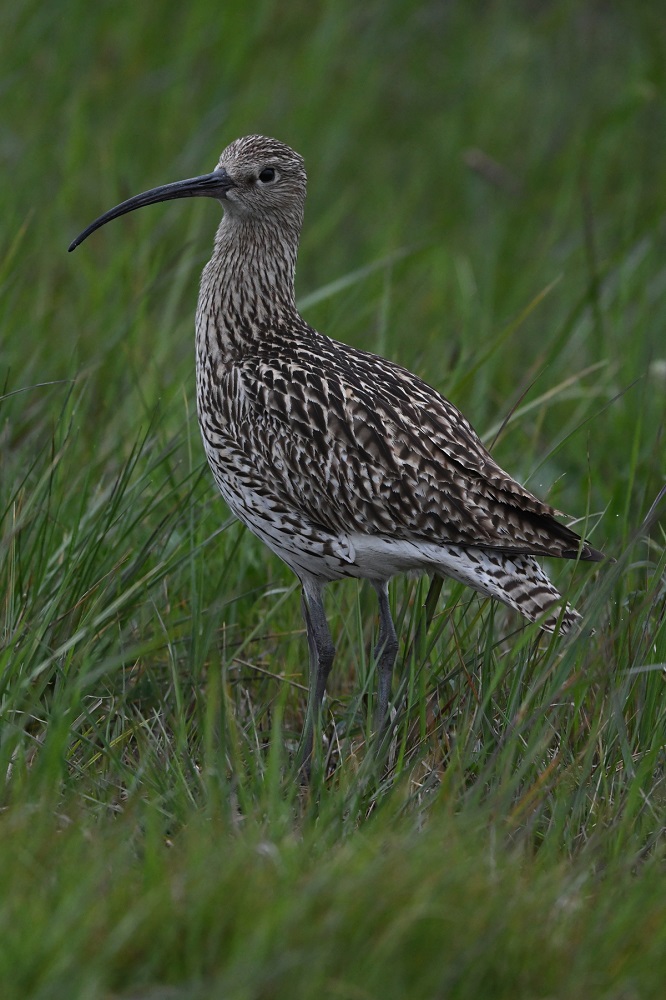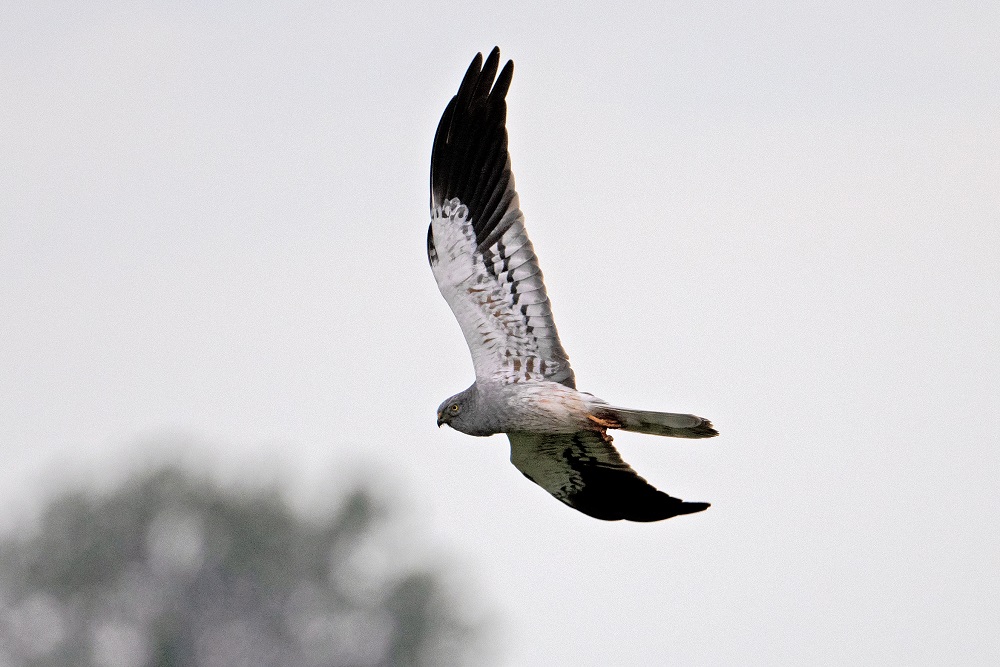Special protection needed
Bird species, which breed on the ground, experience big challenges in times of intensive agricultural use of land, falling groundwater levels and a general land usage. How may we protect the Common Snipe, Northern Lapwing, Eurasian Curlew and Montagu’s Harrier from serious declines?
High up in a tree, dangerous situations are rather clear to see. No doubt, even there birds face natural nest predators, but with people those birds breeding on trees do not have so much to do as long as there will be enough trees. On the ground, in the meadow, a clutch is at the mercy of foxes and ravens. A much bigger problem for grassland birds are the rare breeding areas. A perfect habitat for the Eurasian Curlew, the Common Snipe or the Northern Lapwing are natural grasslands with a high groundwater level, not much woods and an extensively used agriculture with late mowing.
Today many moors are reforested. Groundwater sinks, agriculture uses land intensively and a high density of people enjoying their leisure time disturbs the remaining, traditional breeding areas. A complex area of conflict has led to the status “threatened with extinction” for many grassland birds in Central Europe. Nature conservationists try to establish optimum conditions for the remaining breeding fields. In the reedy marsh of Vorarlberg, close to Lake Constance, Austrian conservationists remove bushes in potential breeding fields, organize weirs for a better water balance and protect clutches with electric fences. Local hunting organizations curb foxes.
Eurasian Curlew – Numenius arquata
The short-distance migrant with the long bill is more than half a meter tall and lives in the boreal zone from West Europe to Siberia, mainly in Northern and Central Europe.
DURING WINTER THE BIRDS MIGRATE TO THE MEDITERRANEAN REGION AND WEST AFRICA.

The original breeding area of the Eurasian Curlew was in moorlands, which became more and more rare. Consequently, the species shifted to extensively used wetlands in lowlands. The positive message is that the former moor breeding bird reacts well to the protective measures and the created breeding habitats regarding the development of its population. Nevertheless, there are too few measures like this so far. The «Compendium of German Breeding Species» shows a negative development of the population, but it indicates a stabilization on a low level.
In South Germany the population of 160 Eurasian Curlew pairs, which mainly breed around Offenburg on the Upper Rhine, has been reduced to 40 pairs within the last 30 years. Several experts protect the tallest wading bird of Europe here with cumbersome measures like huge confined areas in collaboration with the local farmers. The electric fences around the breeding areas do not please everyone, but they have greatly improved the breeding success. For the farmers the late mowing means some losses, but for the Eurasian Curlew it is about surviving as the fledglings need a lot of insects. Many other wild flora and fauna, endangered by intensive agriculture, benefit of protected Great Bustard areas.

Northern Lapwing – Vanellus vanellus
Especially noticeable among meadow-breeding bird species is the relatively low sexual dimorphism. The female Eurasian Curlew is even taller than the male and has a longer bill. Among the Northern Lapwings with their striking look, the teetering feathers at their head and their loud “Kie-witt” both partners breed.
The chicks of the lapwings leave their nest very early to look for insects themselves on stretches of water. This challenges the Northern Lapwing finding enough food among the uniform grass species and the lack of wetland or inundation areas.
In addition, their clutch is at risk because of farming. Usually, the Northern Lapwing remains faithful to their breeding ground, but if the brood was not successful, they have to shift to other ground. As an acknowledged herald of spring in Northern Germany and the Netherlands, people traditionally stole eggs from the clutch of the Northern Lapwing. Today organizations at the North Sea like “Schutzstation Wattenmeer” fence the breeding areas at large-scale to protect the clutch from tourism and too many people.
The range of the Northern Lapwing embraces a huge area, from the moderate Mediterranean zone of West Europe to the Eastern part of Russia. The short-distance migrant spends mild winters even in large numbers in the North. Its rapidly declining population since the 1970s brought the Northern Lapwing on the red list of IUCN and unites nature conservationists internationally in a common effort to protect the population and their habitats.

Common Snipe – Gallinago gallinago
Even the Common Snipe does not show a strong sexual dimorphism if we just use our eyes. Adding our ears, we recognize the male by their loud courtship, which sounds like a bleating sound. The louder the more attractive for the female. The sound made the German speaking population to call the Common Snipe “sky goat”. A Common Snipe is best to find via the call as it shelters very well and is not easy to discover.
The population of this snipe bird has halved in Germany within the last 20 years as their habitats like moors and wetlands diminished. In their population range from Eurasia to Kamchatka researchers estimate two million species. Their population problem exists mainly in the inlands of Central Europe.
EVEN THE MONTAGU’S HARRIER, WHO BELONGS TO THE FAMILY OF HAWKS AND APPEARS REALLY IMPRESSIVE WITH ITS SIZE OF 43-47 CM AND A WINGSPAN OF 120 CM, STRUGGLES AS GROUND BREEDER.

Montagu’s Harrier – Circus pygargus
The species needs broad river valleys, wet to dry habitats like fens or steppes and heaths. Globally the species is not endangered, just in Europe the population is declining in many regions. Its clutches with the three to five eggs the Montagu’s Harrier establish in fields with not too high and not too dense vegetation in a range from the South of Sweden and Great Britain to the North of Africa. Under optimum conditions the Montagu’s Harrier breeds in a sort of colony. There is a positive sign given by the last «Compendium of German Breeding Birds” that prove the protection measures for the species to be effective. The bird population develops well and recovers in many regions.
Protecting grassland birds means a basic rethinking for us. It needs extensively used, big and undisturbed areas. We can use unobtrusive methods and be at the edge of those areas and watch the birds, other fauna and the diverse flora with our optics. First successes of the targeted species protection measures show we can enjoy the birds in future through careful conservation.